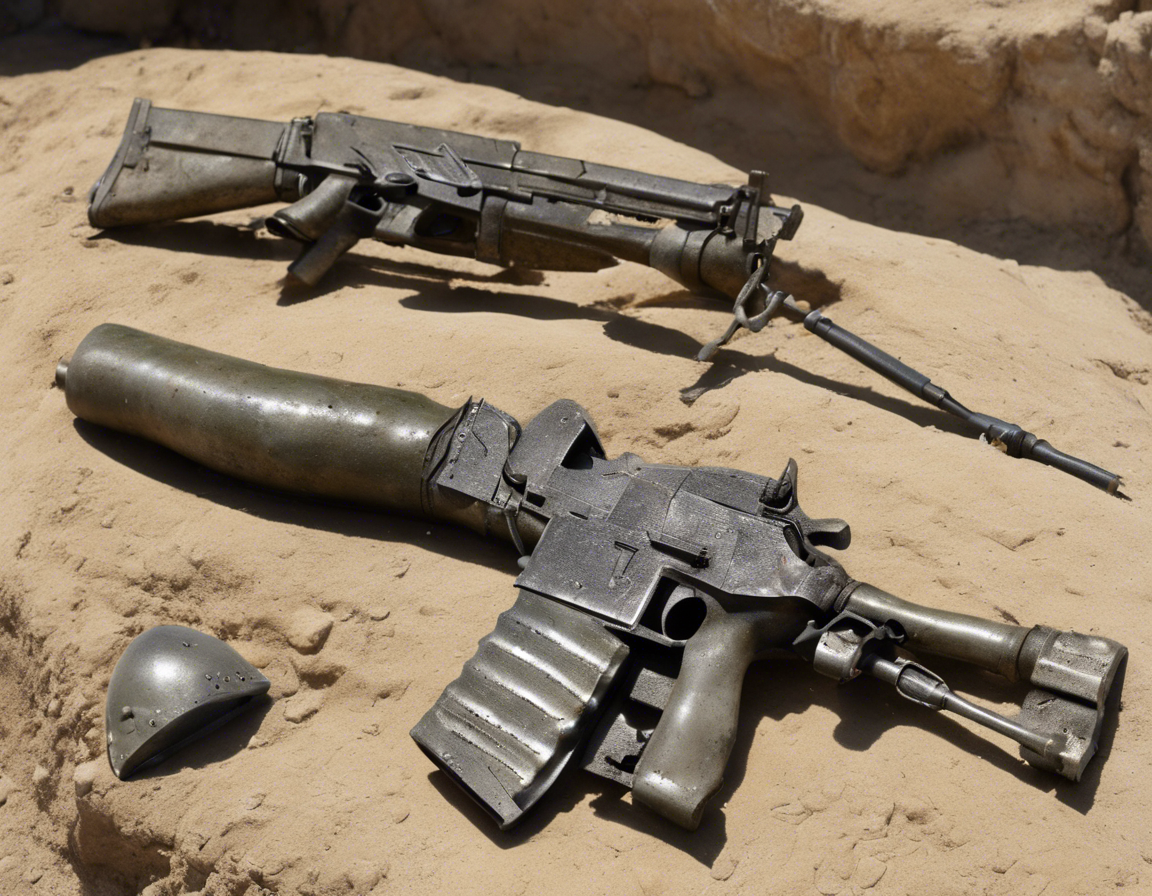Exploring the Iron Sting Weapon: Israel’s Latest Advancement

Introduction
In recent years, Israel has made significant advancements in military technology, with a particular focus on enhancing its weapons capabilities. One such innovation is the Iron Sting weapon, a cutting-edge munition system that has revolutionized anti-tank warfare. This article will delve into the features, capabilities, and impact of the Iron Sting weapon, shedding light on why it has become a game-changer for the Israeli Defense Forces (IDF).
History of the Iron Sting Weapon
The Iron Sting weapon was developed by Rafael Advanced Defense Systems, an Israeli defense technology company with a long history of producing cutting-edge munitions. The development of the Iron Sting weapon was prompted by the need for a more versatile and effective anti-tank missile system that could outperform existing platforms in terms of range, accuracy, and lethality.
Features and Components
The Iron Sting weapon is a lightweight, man-portable missile system designed for anti-tank operations. It consists of several key components, including the launcher, guidance system, warhead, and propulsion unit. The launcher is ergonomically designed for ease of use by infantry soldiers, allowing for quick deployment and target acquisition.
Guidance System
One of the key features of the Iron Sting weapon is its advanced guidance system, which incorporates state-of-the-art technologies to ensure precision strike capabilities. The missile is equipped with a dual-mode seeker that combines infrared and laser guidance for enhanced target acquisition and tracking.
Warhead
The warhead of the Iron Sting weapon is designed to penetrate armored vehicles and inflict maximum damage upon impact. It utilizes a tandem charge mechanism, which enables it to defeat reactive armor systems commonly found on modern tanks. This ensures high levels of lethality against a wide range of armored targets.
Propulsion Unit
The propulsion unit of the Iron Sting weapon consists of a solid-fueled rocket motor that provides the missile with high speed and maneuverability. This allows the missile to engage moving targets at extended ranges, making it an ideal choice for urban combat scenarios where rapid response times are crucial.
Operational Capabilities
The Iron Sting weapon offers a range of operational capabilities that make it well-suited for a variety of combat scenarios. Its long-range anti-tank capabilities enable it to engage targets at distances exceeding 4 kilometers, providing infantry units with a significant advantage on the battlefield. Additionally, the missile’s top-attack profile allows it to strike the vulnerable top armor of enemy tanks, increasing the likelihood of a successful kill.
Impact on the Battlefield
Since its introduction, the Iron Sting weapon has had a profound impact on the battlefield, enhancing the IDF’s anti-tank capabilities and overall combat effectiveness. The system has been successfully deployed in various conflict zones, where it has proven instrumental in neutralizing enemy armor and fortifications. Its versatility and precision strike capabilities have earned it a reputation as one of the most potent anti-tank munitions in the world.
Future Developments
Looking ahead, Rafael Advanced Defense Systems continues to invest in the development of advanced munitions technologies, with a focus on enhancing the capabilities of the Iron Sting weapon. Future iterations of the system are expected to feature improved guidance systems, enhanced range, and increased lethality, further solidifying its position as a premier anti-tank platform.
Conclusion
In conclusion, the Iron Sting weapon represents a significant leap forward in anti-tank warfare capabilities for the Israeli Defense Forces. With its advanced guidance system, formidable warhead, and exceptional operational capabilities, the system has redefined the standards for anti-tank munitions and established itself as a key asset on the modern battlefield.
FAQs
Q1: What sets the Iron Sting weapon apart from other anti-tank systems?
A1: The Iron Sting weapon stands out due to its advanced guidance system, tandem charge warhead, and long-range capabilities, making it highly effective against armored targets.
Q2: How does the Iron Sting weapon compare to other anti-tank missiles in terms of range?
A2: The Iron Sting weapon offers an impressive range of over 4 kilometers, surpassing many competing anti-tank systems in its class.
Q3: Can the Iron Sting weapon be fired from a stationary position?
A3: Yes, the Iron Sting weapon can be fired from a stationary position or on the move, providing infantry units with flexibility in combat scenarios.
Q4: What types of armored vehicles can the Iron Sting weapon penetrate?
A4: The Iron Sting weapon is capable of penetrating a wide range of armored vehicles, including main battle tanks, armored personnel carriers, and fortified positions.
Q5: Is the Iron Sting weapon currently in service with other military forces besides the IDF?
A5: While the Iron Sting weapon was initially developed for the IDF, there is growing interest from other military forces around the world due to its advanced capabilities and proven performance in combat.
These FAQs provide key information about the Iron Sting weapon, addressing common queries about its features, capabilities, and deployment.





